A small project to create a guided missile without using any stock guidance and relying entirely on the in-game aerodynamics and Funky Trees code to home in and detonate with minimal XML modifications. Everything is stock and unaltered with the following exceptions:
- Engine is scaled down to fit 0.5m profile and thrust set to 2 to simulate rocket motor
- Detonation system is set to 0 mass and drag with 150lbs added to nose cone to simulate warhead and electronics
- Rotors are set to 0 drag and mass due to the MASSIVE amount of drag they induce. They are tucked under the rear control surfaces and are responsible for actuating the rear control surfaces
Due to the limitations of the Funky Tree code using the primary aircraft for some of the necessary inputs for the code, I don't think the missile can be launched from a host aircraft as the control surfaces will attempt to make corrections based on the host aircraft's position relative to target and cause the missile to trash. Think of this as a tech demo for potential missile.
INSTRUCTIONS:
-Select Air-to-Air or Air-to-Ground mode
-Select intended target
-Activate group 1
-Sit back and watch
The missile itself is a ~500lb missile propelled to around mach 2.8 with a 33 second burn time at full power. To simplify guidance, the control surfaces will always keep the missile at 0 roll angle. After turning on guidance by selecting a target and activating group 1, the missile will use three separate guidance modes to guide in to target and manage thrust of the missile to maximize range and hit probability.
At ranges above 7000m, the missile uses its long range guidance logic that prefers lower angle of attack maneuvers and wider turns to minimize energy loss to induced drag. Depending on how far away the target is, the missile will also fly along a loft profile to maximize range against far targets. This loft profile will put the missile above target at all medium and long range launches, During this stage, the rocket motor will fire at full throttle to build energy for the terminal stages of intercept.
Once at 7000m separation to target, the guidance profile will no longer attempt to loft and will follow a simple intercept. The missile will still prefer using wider turns to make corrections to minimize speed loss at this stage. The rocket motor will no longer burn at full thrust and will instead manage the thrust to attempt to keep closure rate at around 400-500m/s to target.
After hitting 4000m from target, the missile will no loner prefer wide turns and will track the target much more aggressively, making course corrections immediately to stay on intercept course. As this range closes, the control surface deflection angle is reduced to prevent over-correction as intercept angles change more rapidly. The rocket motor continues to attempt to hold closure rate in this last stage of guidance.
Once the missile impacts or passes by target, the proximity sensor in the nose sends a detonation command to the 2 warheads mounted in the nose and near the base of the fuselage. This is not based on absolute target distance, but instead uses target closure rate to determine the closet possible distance from target to detonate. The missile must pass within a minimum of 100m from target for the proximity sensor to send a detonation command. If you want to test the proximity function, then just select a target and fly the missile manually to intercept. The proximity detonation works regardless of if the guidance logic is active or not.
While not extremely practical for the game due to being unable to mount to an aircraft, it is a fun craft to run through dogfights and in sandbox to see how the missile guidance system can track and destroy targets in a more realistic manner than the stock missiles. The hit probability is extremely high with the only times it has not achieved a kill is due to the closure rate being too high and the game just clipping the missile through the target.
I'll put a breakdown of the Funky Trees code in here at a later point to explain how it all works.
IMPROVEMENTS:
- Loft profile added to missile. Testing shows a massive improvement in range and performance on cold targets at long range
- Missile profile streamlined for vastly reduced drag and weight
- Control surfaces and wing profiles adjusted to increase performance at low indicated airspeeds and increase overall maneuverability
- Detonation system reworked to increase reliability by moving flight computer as close to the tip of the nose as possible and the addition of a second set of detacher-triggered explosives at the base of the primary fuselage to allow for proper detonation even if the nose section is damaged
Known Issues:
Due to game limitations, higher closure rates can sometimes cause the missile to simply "clip" through a target aircraft despite clearly hitting. This is more noticeable on mobile, but does sometimes happen on PC. To prevent this from happening, slowing the game to slow motion before impact has always fixed this problem for me. However, this doesn't occur often as the motor will keep the closure rate reasonable if it can. Most of the time this occurs due to a extremely fast target coming in head on to the missile.
Guidance must be activated while within a 180 degree angle of the intended target for best performance. While this is not strictly necessary for shorter range targets, the loft profile will tend to over-loft the missile into space if the missile is heading away from target when guidance is activated. Simply steer the missile to point remotely close to target before activating guidance to prevent this.
The missile cannot be mounted to an aircraft and fired to my knowledge. The guidance needs to know the target heading and elevation rate of change from the missile to guide, and I don't think these can be set as outputs from a part located on the missile. From my testing, the missile will try to correct using the host aircraft parameters rather than its own.
Specifications
General Characteristics
- Predecessor AIM-108mk2
- Successors 6 airplane(s) +7 bonus
- Created On Android
- Wingspan 2.2ft (0.7m)
- Length 14.6ft (4.5m)
- Height 2.2ft (0.7m)
- Empty Weight 536lbs (243kg)
- Loaded Weight 558lbs (253kg)
Performance
- Power/Weight Ratio 12.06
- Wing Loading 24.4lbs/ft2 (119.3kg/m2)
- Wing Area 22.9ft2 (2.1m2)
- Drag Points 40
Parts
- Number of Parts 28
- Control Surfaces 0
- Performance Cost 208

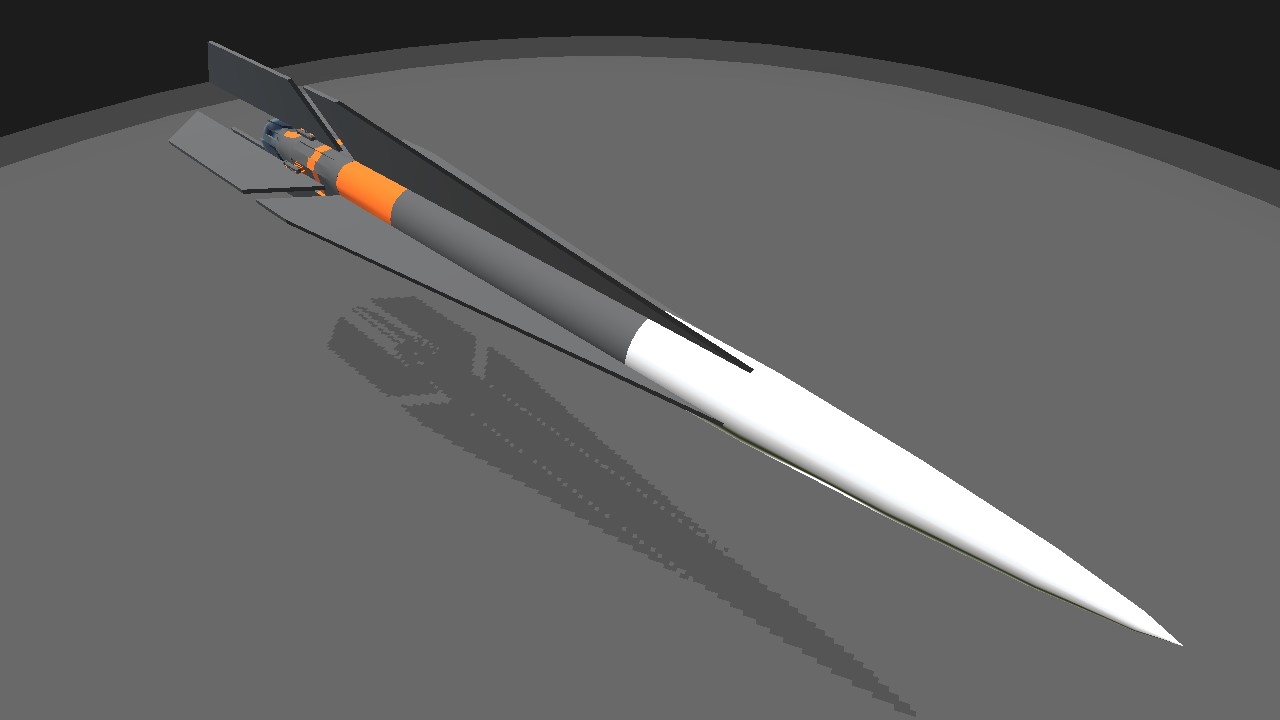
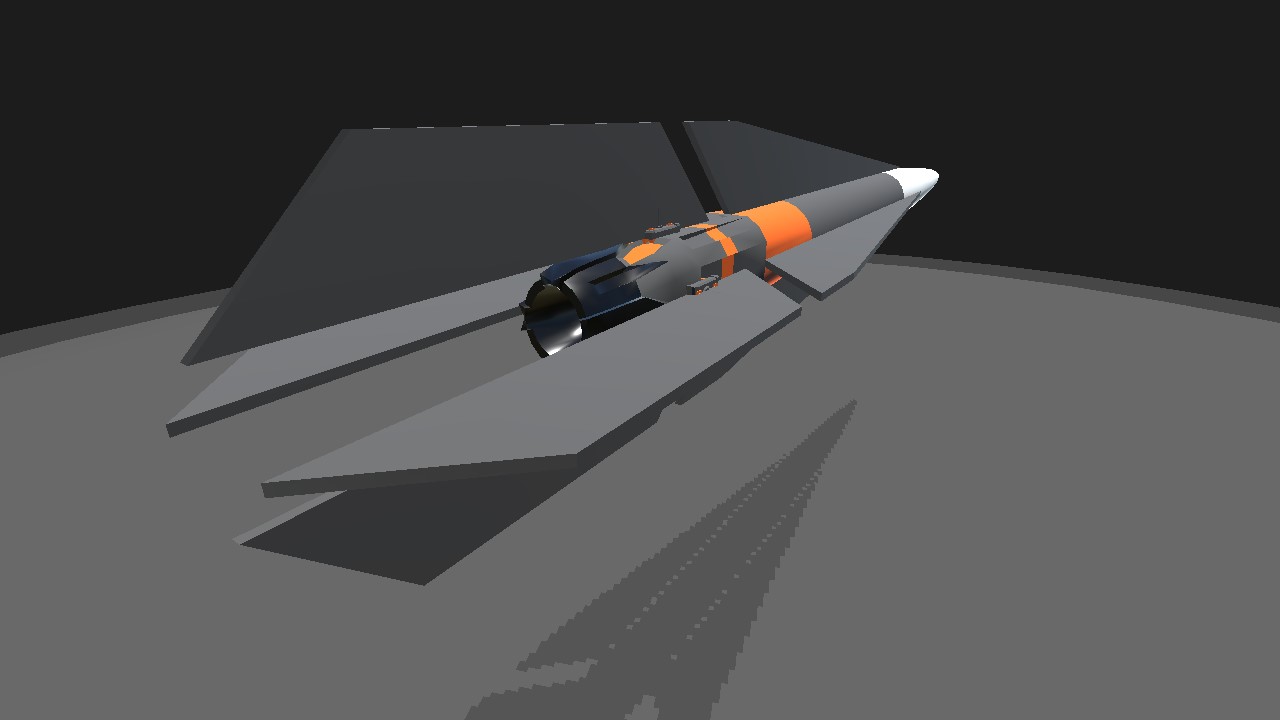
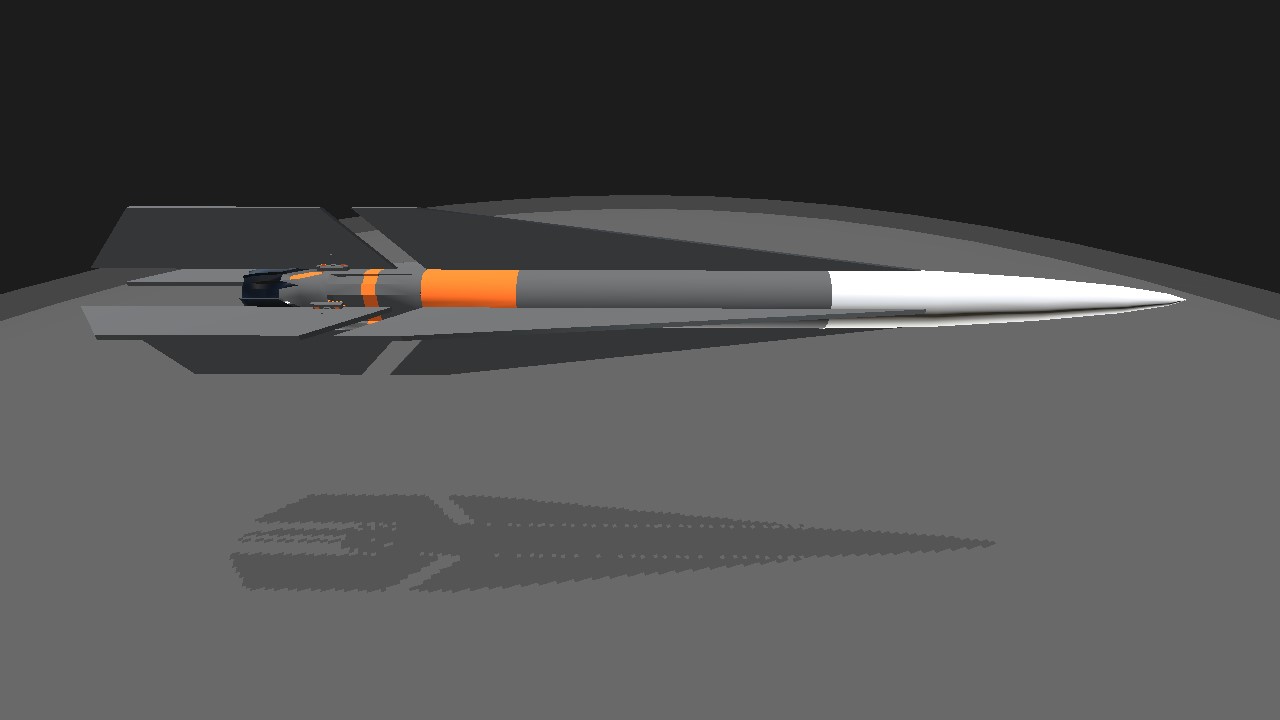

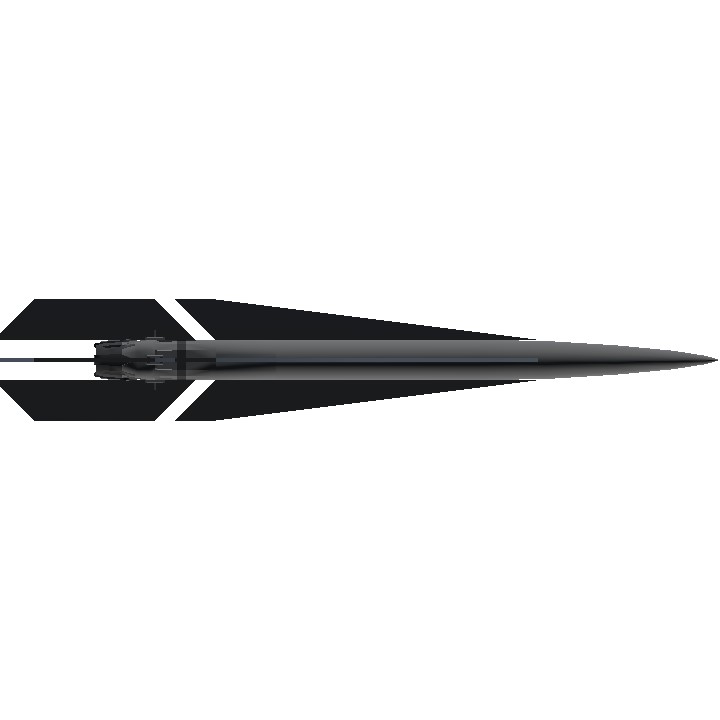
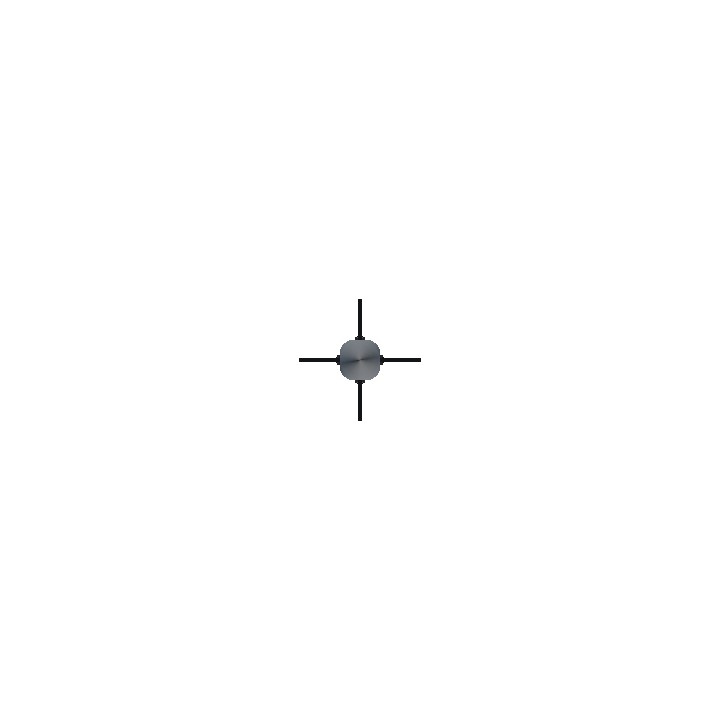
Interesting